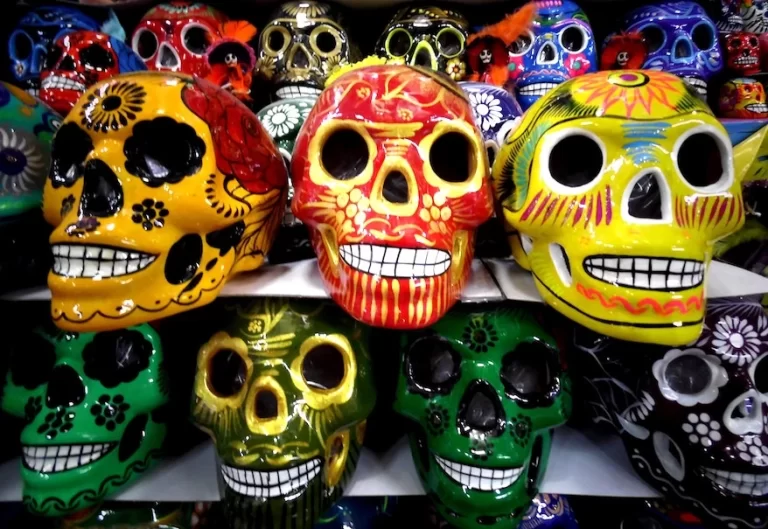When people hear the words Dia de Los Muertos, meaning Day of the Dead, they often think of it as being the Mexican version of Halloween. The two are in fact entirely separate holidays. Whereas Halloween is often dark, focusing on goblins, ghouls, costumes for adults and trick-or-treating for children. Día de Los Muertos is a two-day vibrant celebration honoring family members who have passed.
How it began
The celebration began thousands of years ago with the Aztecs, the Toltecs and the Nahua’s. They believed that grieving for those who had died was disrespectful. Thus the Day of the Dead was born and they decided to celebrate the dead instead of grieving them. This Mexican holiday gradually grew into what it is today. It has become more widespread, now celebrated in countries such as Guatemala, Brazil, Spain, and the United States.
Día de Los Muertos takes place on November 1st to November 2nd. On the 1st it is believed that children who have passed can come back and be with their families. Whereas on the 2nd is when the deceased adults come back to visit.
The traditions
One of the traditions is the building of Ofrendas or altars. They are created in homes or at the families graves. But these altars do not serve the purpose of worship, but to encourage the visits by the souls. The altars help guide the deceased to visit the living. Each altar contains four elements representing earth, wind, fire, and water. Earth is generally some type of food items, such as Pan de Muerto, or Day of the Dead bread. The Wind element is Papel Picado. Papel Picado is colorful and decorative papers usually hung as banners for decoration. The Fire element is candles situated in the form of a cross on the altar so the spirits can find their way. Lastly, water is often placed in a pitcher.
The Ofrendas are also decorated with marigolds, photos of the family member, monarch butterflies and Calaveras de Azucar. Calaveras meaning skull is popular during Dia de Los Muertos and is made from sugar. The deceased’s name is often written on the forehead in icing. In 2008 the United Nations Educational, Scientific, and Cultural Organization (UNESCO) declared the holiday as being part of “cultural heritage,” adding it to the list of Intangible Cultural Heritage of Humanity.
A Day of the Dead parade did not exist until the 2015 James Bond film, Spectre. It showcased a parade filled with people dressed in various elegant and colorful outfits, donning skull masks and makeup. Ever since 2016 Mexico City has held the parade. At this parade is where you will find a colorful display of floats, giant puppets, and dancers, which attracts thousands of viewers every year.
Sources:
https://www.nationalgeographic.com/travel/destinations/north-america/mexico/top-ten-day-of-dead-mexico/https://insider.si.edu/2016/10/5-facts-dia-de-los-muertos-day-dead/https://theculturetrip.com/north-america/mexico/articles/day-of-the-dead-in-mexico-10-traditions-customs/https://www.tripsavvy.com/foods-for-day-of-the-dead-1588709


